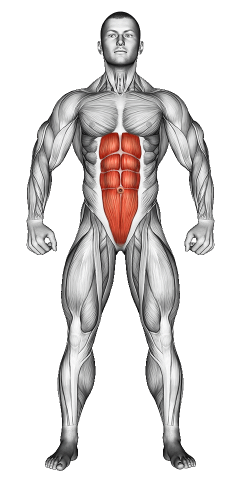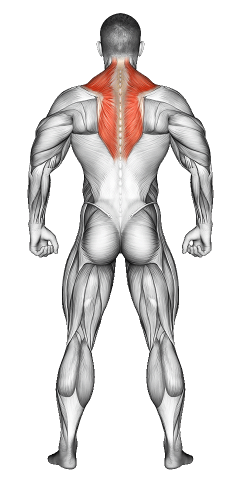Alternate Leg Raise From Reverse Plank Position: Video Tutorial & Exercise Guide

Written By: Claude Michael
Updated: Oct 13, 2024
| Workout | Alternate Leg Raise From Reverse Plank Position |
| Primary Muscle Group | Abs |
| Secondary Muscle Group | Shoulders |
| Equipment Required | Bodyweight |
| Force Type | Pull |
| Mechanics | Compound |
| Exercise Type | Strength |
| Difficulty | Advanced |
Alternate Leg Raise From Reverse Plank Position: Video Tutorial & Exercise Guide
- 1.Alternate Leg Raise From Reverse Plank Position: Muscle Groups
- -1.1Primary Muscle Group
- -1.2Secondary Muscle Group
- 2.Alternate Leg Raise From Reverse Plank Position: Step-by-Step Guide
- 3.Alternate Leg Raise From Reverse Plank Position: Overview
- 4.Alternate Leg Raise From Reverse Plank Position: Benefits
- 5.Alternate Leg Raise From Reverse Plank Position: Pro Tips & Advanced Techniques
- 6.Alternate Leg Raise From Reverse Plank Position: Progression Plan
- 7.Alternate Leg Raise From Reverse Plank Position: Frequently Asked Questions (FAQs)
Secondary Muscles Group
Alternate Leg Raise from Reverse Plank: Step-by-Step Guide
- Step 1: Begin in a reverse plank position with your hands placed shoulder-width apart behind you and your legs extended straight in front. Keep your body in a straight line from head to heels, engaging your core and glutes.
- Step 2: Raise one leg straight up towards the ceiling, keeping your toes pointed and your leg fully extended. Avoid bending your knees during the movement.
- Step 3: Lower the leg back to the reverse plank position in a controlled manner, making sure to keep your hips lifted and core tight.
- Step 4: Immediately raise the opposite leg in the same motion, keeping your body steady and avoiding any twisting or sagging of the hips.
- Step 5: Alternate legs, maintaining a strong, stable reverse plank throughout the exercise.
- Step 6: Continue alternating for the desired number of reps, focusing on core engagement and maintaining proper form.
Alternate Leg Raise from Reverse Plank: Overview
The Alternate Leg Raise from Reverse Plank is a powerful bodyweight exercise that targets your core, glutes, hamstrings, and hip flexors. By holding a reverse plank while lifting one leg at a time, you engage your stabilizer muscles and improve overall core strength. This movement is a fantastic addition to any core workout routine, offering a dynamic challenge that enhances stability and control.
Alternate Leg Raise from Reverse Plank: Benefits
This exercise strengthens your entire core, with a specific focus on the lower abs, hip flexors, and glutes. It also promotes shoulder stability and improves flexibility in the hamstrings and hip flexors. The alternating leg raise adds a balance challenge, helping to build endurance and control, making it perfect for those looking to enhance functional core strength and stability.
Alternate Leg Raise from Reverse Plank: Pro Tips & Advanced Techniques
To get the most out of this exercise, make sure you’re keeping your hips lifted and core tight throughout the movement. Avoid letting your body sag as you raise your legs. For an extra challenge, slow down the tempo of each leg raise or add ankle weights for increased resistance. Additionally, focus on controlled breathing, exhaling as you lift your leg and inhaling as you lower it.
Alternate Leg Raise from Reverse Plank: Progression Plan
Beginner
Intermediate
Advanced
Alternate Leg Raise From Reverse Plank Position: Frequently Asked Questions (FAQs)
What muscles do Alternate Leg Raises from Reverse Plank target?
+This exercise primarily targets the core, glutes, hamstrings, and hip flexors, while also engaging the shoulders and back for stability.
How can I make Alternate Leg Raises from Reverse Plank more challenging?
+You can increase the difficulty by adding ankle weights, holding the leg at the top for a few seconds, or slowing down the movement for greater time under tension.
How often should I include this exercise in my routine?
+Incorporate this exercise 2-3 times a week as part of your core workout to improve strength, stability, and flexibility.
What are common mistakes to avoid?
+Avoid letting your hips sag during the movement. Focus on maintaining a straight line from shoulders to heels and engage your core throughout.
Share
Don’t Wish for It, Work for It – Join the FlexXP Newsletter Today!
Thank you for signing up for the FlexXP Newsletter!
This site is protected and the Google Privacy Policy and Terms of Service apply.

